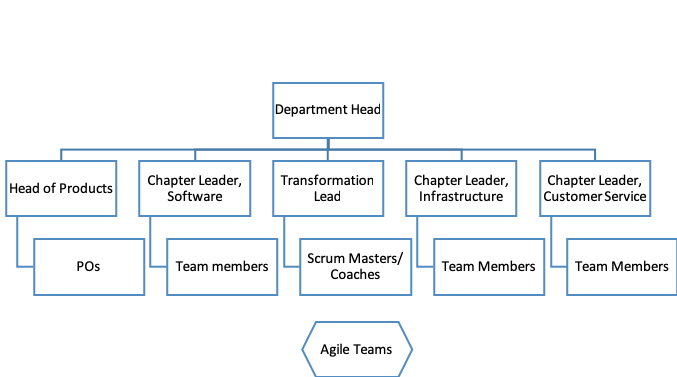After a few years of practicing agile, one the most talked about Next Gen Agile Transformation is Business Agility. In this blog, I want to talk about the changes in expectations from delivery managers to move towards capability leaders.
Benefits of moving to a Business Agility driven Org Model
Why go through this change? One may ask. Benefits are Many.
First and only need of the hour in the digital world is the sheer ability to respond to market conditions and customer needs.
It brings higher ownership in teams, more leadership involvement in creating a compelling vision and strategic decisions and a possibility towards high performance.
Before any of the benefits are reaped, there are definitely changes that organization has to go through and multiple challenges will encounter. And the appreciation of the challenges enables mitigation steps need to be in place.
First transformation I am taking up today is the changing role of the delivery managers and how rest of the organization takes up this change.
Primer on terms
Spotify is one of the flavors of Scaling or organization model that is used as a model for business agility.
I am drawing my reference of how spotify works from here and my experiences in the Enterprise Agile Transformation that I am coaching.
Disclaimer: There is no relationship or promotion of Spotify from my side – Only the way of working
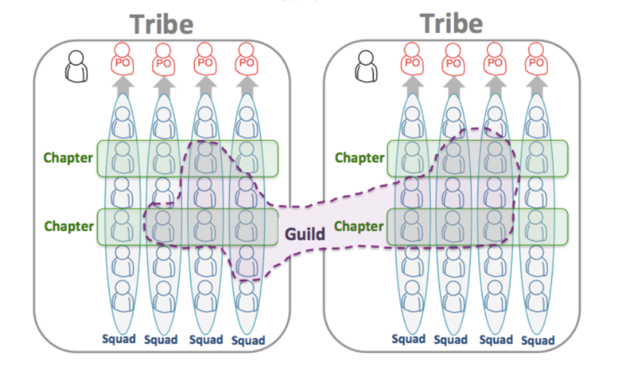
A brief introduction to this alternate agile transformation.
Squad or Teams are agile teams created as cross functional team members drawn from different chapters for a common purpose.
Tribe is a group of 3 to 12 Teams come together for a business purpose typically having a profit and loss ownership.
Chapters are the home for team members to hone their skill.
Guilds are short lived groups created to solve a problem or challenge
Role of Delivery Manager and Transition to Chapter Leader

The traditional agile organizations have agile teams reporting to a delivery owner with product owners reporting to the product leadership. This has been created to ensure that there is a Yin-Yan or the Chinese walls between the ‘how’ and the ‘why-what’ of the organization.
This also enabled organizations to steer away from the command and control. As the decision making of road ahead was completely disentangled from the engineering organization.
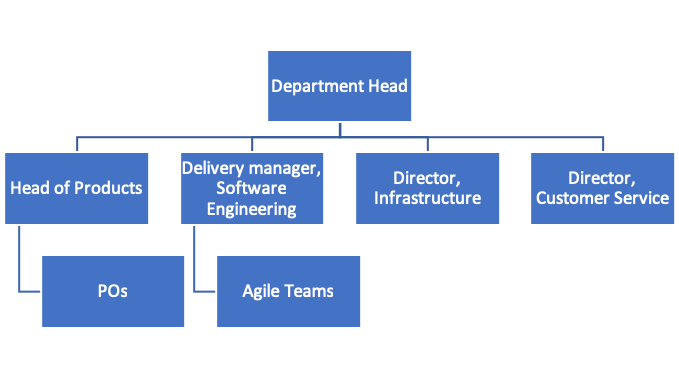
A digression for the India based software teams. In distributed agile teams, the product management typically located closer to the customer or in US/Europe and rest of agile teams are located in India. This also helped the delivery manager to provide oversight and single point of contact for the US counterparts.
As teams mature, the next gamut of self-adaptation needs to be the teams taking collective ownership and self-organize. In my experience, as long as a role of the delivery manager remains, there is a need for owning the delivery outside the agile teams. This becomes counter-productive to maturing of practices.
Without an external stimulus, this is often not possible as this relates to human psychology to retain the role that you have been assigned to and not the contrary to make the role redundant.
Enter the Next-Gen Agile Transformation…
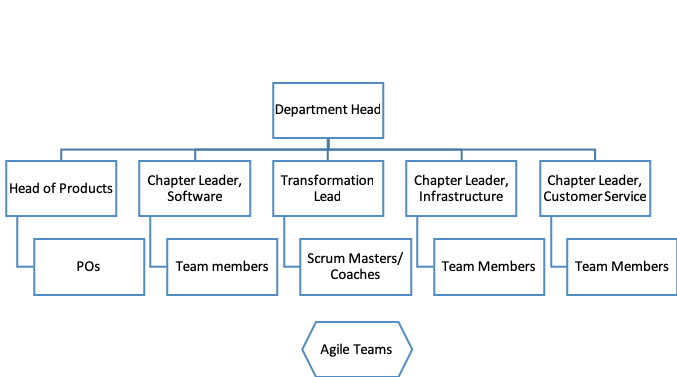
In the next-gen agile transformation, role of the delivery manager is taken off and replaced with a Chapter leader. The role of the Chapter leader
- Recruitment and Retention of personnel
- Feedback and Performance of personnel
- Capability development of personnel
- Partner with Product Owners on Technology roadmaps
- Partner with other chapter leaders
Note the move from ‘Manager’ to a ‘Leader’ in the nomenclature and that’s a shift from managing any deliverables to the overall betterment of the team members.
This shift means number of things to different stakeholders from chapter leader, teams, product owners and the enterprise leadership.
1. Chapter leaders owning the capability development
Chapter leaders’ role with this transformation gets higher ownership on recruitment, retention and capability enhancement of the team members.
Partnering with product owners in influencing the technology roadmaps and ensuring that the feedback loops are closed and watchful of any fall in agile practices.
Further, they need to partner with other chapter leaders to ensure the right kind of teams are formed.
These leaders need organization support if they need to make this transition effectively.
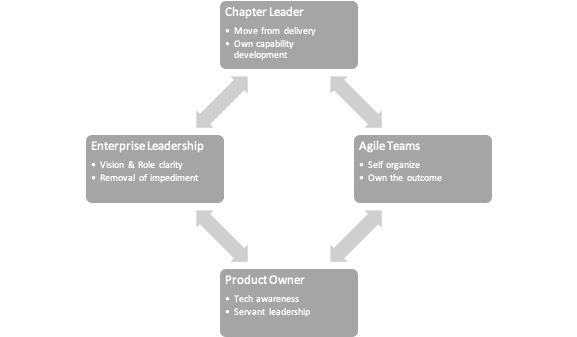
2. Agile Teams move to self-organize and owning outcomes
- Ownership of the outcome by way of KPIs, Team goals etc.
- Providing clarity of solution options and enabling timely decisions
- Self-organize and raise impediments
3. Product Owners taking accountability for entire backlog
Traditional product owners own only the ‘features’ part of the agile teams
- Owning the entire backlog instead of only the features
- Servant leadership to motivate the team with exciting work aligned with the goals
- Technology awareness to ensure timely tech decisions
4. Leadership providing Vision and impediment removal
- Providing clarity in roles for all involved
- Creating the vision for the teams
- Continuous Removal of impediments for the teams
With these four changes, I believe that Chapter Leaders can be successful in creating a self-organized agile team aimed toward hi-performance.
With number of chapters forming the Agile teams while it sounds harder to form and more complex to start with, in a digital world combinatorial skill is the key for success. Some more challenges are highlighted in the blog on self-organizing teams by my colleague Srini is here.
While writing this blog, I have come to realize that there are several dimensions that need to be covered for achieving business agility. Some of the challenges are highlighted here for the sake of complete picture.
Challenges of moving to this model
Transformation is harder for all involved including team members, product owners, chapter leaders and enterprise leadership. There is a need of acceptance of this change and why this change is being envisaged needs to be (over) communicated. And Scrum masters and Agile Coaches play a pivotal role here.
There are different type personalities that emerge strongly. Psychological safety is critical to be established. Else there is no room for improvement. Vulnerability and open for feedback need reinforcement from the Human resources and how the performance management is done.
While teams adapt, there would certainly be gaps in what each team delivers. When customer needs change, cross team clashes come in. And they need to be handled as an impediment. They can be in form of either capability mismatch or knowledge gap or expectation setting. This is one of the big areas that leadership needs to step in the initial days.
A compelling vision for any transformation is of paramount importance to propel the teams forward else self-complacence and confusion sets in.
And more on these challenges in future blogs in the same topic of business agility

